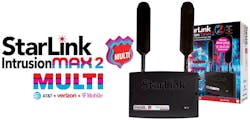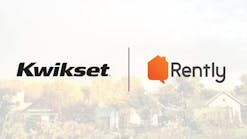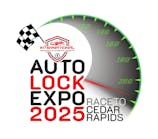Service vehicles are an important asset to every locksmith business. They allow you to take your entire shop anywhere your customers need you to be and give you the ability to go from jobsite to jobsite without having to restock products, parts or tools.
While you drive to each location, you are missing the opportunity to advertise basically for free if your vehicle doesn’t have your business information on it.
This vehicle is an extension of you and your business. Showing up to a job in an unorganized, dirty, plain white van tells your customer that you don’t care about your business and you don’t care about them, their security or needs. They might not call you back or recommend anyone to you, or they may just recommend others steer clear. First impressions are extremely important in business.
These guidelines are mostly for newcomers to the locksmithing business who may need some assistance in deciding what to have in inventory and how to set up a service van. The ideas expressed here are based on my 17 years as a Locksmith/Business Owner.
What to Stock
Every business is different and what you should keep in stock depends on a number of factors:
- Population both in your immediate area as well as other areas you service;
- The most common lock and hardware brands, finishes and types that have been sold in your service area over the past 20 years or so;
- The most common lock and hardware brands, finishes and types that are being used right now; and
- The durability and life-span of the older and newer locks and hardware that you will encounter.
Larger populated areas may require you to stock a larger amount of product and parts while less populated areas may not need as much on hand. The brands, styles, keyways and finishes depend on what was and what is popular in your area. Finish and style preferences change from year to year, sometimes more often but keyway or brand tend to stay the same or similar. Some of you may need to stock more Weslock while others need more Weiser, Emtek, Baldwin, Arrow or Schlage. It all depends on what is out there.
Parts may include brand-specific pin kits, tailpieces, cams, retainers, retainer caps, retainer springs, retainer pins, spindles, lever or knob return springs, screws, strikes, latches, bolts or other brand-specific parts such as Adams Rite cam plugs for push paddles, clutches for Simplex mechanical locks, replacement shackles for Master Lock padlocks and Jackson exit device rebuild kits.
Most locks made 20 years ago will perform longer than most locks made today. But eventually those older locks will fail, something will break and you will need a part for it that you don’t have. Most of us will simply sell the customer a new lock but a lot of our customers would prefer to keep the same old, dirty, chipped finish lock they have had for years so you need to fix it. Knowing what your predecessors sold years ago will help you serve your current customers, repair their lock and they will come back the next time.
You will see trends in new homes and businesses in your area that can help you decide which finishes or brands you should sell. Builders often buy and install based on price or on what their supplier is offering to them. The products may not be the best, cheapest or fanciest, but they are what that one or many builders may use on 10, 40 or more new homes or businesses. Once they have, those locks can become the trend.
Organization & Interior
I started my business out of the back seat of my Dodge Neon. My tools, pinning kit, keys, machines, etc. were stored in the trunk. I knelt in the back seat to rekey locks or make keys. My car opening tools were separated by type. The pinning kit always had enough pins and each pin size space contained the correctly sized pins, no spillover from other sizes, no pins placed back into the wrong spot. All key blanks were in their own boxes and my key machine was kept clean. A lot of customers watched me work and a large majority of them commented that they were surprised by my organization and cleanliness in such a small, cramped area. When I purchased my first van, I kept that same policy of organized cleanliness.
Your service vehicle, if large enough, should have a workbench that works for you. I custom built my first workbench so that it suited my needs:
1) The correct height for a seated position, on a stool that was the right height for me, so my knees didn’t hit anything and cause me to complain to myself later;
2) An appropriate length and depth for the pinning kit, bench vise and key duplicator;
3) Solid enough to support the force needed to properly stamp keys or pound out a roll pin.
The pinning kit was on the opposite end of the duplicator so as not to get brass shavings into it, the vise was between them and I had sections on the bench that held small boxes of followers, tweezers, other small tools and things I may need while rekeying.
Under the workbench is where I kept my seat while not in use and any tools that have cases such as a grinder or corded drill. My van came partially equipped with some Adrian Steel storage components, a divider with a door to protect me while driving and a thick floor mat.
One storage unit was modified to hold a deep cycle marine battery and a 1000 watt power inverter. The battery was professionally connected to my engine battery and alternator along with a solenoid to only trickle charge the marine battery. This prevented any overload to the vehicle but kept the marine battery charged.
I installed DC powered lights above my workbench and above each door. These lights were connected to the marine battery so not to drain the vehicle battery if I had to be at one spot for a long time. A service vehicle that you can’t work in at night is not going to do anyone any good. One that won’t start because you used your main battery to run your equipment definitely doesn’t work.
The pre-installed drawer and storage sections came in very handy for:
1) Large and small tools
2) Parts such as cylinders, latches, mortise cylinder spacers, tailpieces, etc.
3) New locks
4) Fishing pole – stored on top of one of the larger units – because you never know when you need some time away.
You may not need a pre-made set of storage components because you may be very handy at making them yourself but every service vehicle needs a storage solution that allows the user to stay organized. I’m not saying you have to label every drawer and door but you must know where everything is, how many of any given item you have at any given time and where you can store additional items if you add something to your inventory or tool selection.
The lack of an efficient layout inside your service vehicle may cause you to spend more time looking for that one part you know you have than you would if you had better organization.
Imagine yourself inside your service vehicle working. This is your new home. Homes generally have a triangular-shaped work area in the kitchen to increase productivity and reduce the amount of time wasted. The refrigerator, stove and sink are three important things used quite often in a kitchen. Your service vehicle should have a pinning kit (sink), duplicator (stove) and parts/product storage (refrigerator).
Where do you want to be rekeying 2, 10 or 50 locks in one sitting? What needs to be within easy reach of that one spot? Where should your key blanks be? How far do you want to move to originate or copy keys from your rekeying station or how far from your code machine do you want your duplicator? Where is your IC Core capping press compared to your IC Core rekeying kit? Where should your key stamping block go in relation to both machines? Where should your KIK, Rim and Mortise cylinders be located so you can easily reach them? How far from your main spot are any tools or small parts you may need in the process of rekeying, generating or duplicating keys?
Once you have answered those questions, you can design your service vehicle work area, layout and organization needs. This will also be the time to determine how many and what types of work lights you will need. Don’t forget 110VAC outlets for your drill, grinder, Dremel or other corded tool you may need to use while on a jobsite. One at the back door and one at the side door (if your vehicle has both) in addition to any on your inverter is generally enough. Make sure you have an easy way to turn the inverter on and off while still standing outside of the vehicle.
It’s very efficient to have items that go together near each other. The more you have to move from your seated position or from one central location, the longer it will take you to finish each job. Your code machine cards (HPC 1200 type) should be within reach of your code machine without having to move your seat. Key blanks should be between your code machine and duplicator with a stamping block and stamps near both. Give away key rings or whatever you use to keep keys together should be nearby as well. Lock lubricant, followers, shims, tweezers, other rekeying tools and paper or cloth towels should be within easy reach of your pinning kit.
Knobs, levers and deadbolts can be stored anywhere because no matter where you store those you will likely have to move from your workbench to obtain them. If you open locked vehicles using car-opening tools, keep them along with probe lights, manuals and wedges near the back or side door within easy reach while you can stand outside. Every time you have to step into your vehicle to grab a tool, part or lock it will cost you time and time is money.
Key Blanks
Some locksmiths prefer to have all of their key blanks on a peg board or slat wall inside of their service vehicle, while others use small drawers with dividers or even keeping them inside of key blank boxes. Hanging your keys on a wall means you must secure them so they don’t fall off when you turn corners. They also make a lot of noise so most people put them in boxes, labeling each box to identify which type is in them. Put the boxes in drawers and organize by type, keyway or part number depending upon which way you prefer to identify keys. Keep the most common keys in an easy to reach drawer close to your duplicator.
Cylinders
Almost every locksmith shop and vehicle should have mortise, rim and key in knob/lever cylinders. Some of you may see a need to stock KIK padlock cylinders that are specific to standard keyways in their area. There will come a time when you have a customer that needs every lock on their building to use the same key, yet some of their locks have the wrong keyway. Sometimes you’ll show up to a job and the lock isn’t working and you find out the cylinder is completely worn out. It’s simple to change most of these but only if you have them in stock and in the correct keyway. Which keyways? The ones that are most popular in your area. Right now most of the United States uses Schlage C, Kwikset, Weiser and Weslock keyways for the majority of their locks, although those are mainly residential. You may see a trend in other keyways, if so, stock cylinders for those as well.
Locks
The most common replacement locks we have seen are residential knobs and levers. People purchase them from hardware stores and home centers and expect them to last forever. They don’t realize there is a high percentage of either plastic, cheap metals or a combination of both in most of those locks and they just don’t last. The latches for these are generally very cheaply made and when they fail they usually fail with the door shut so you will certainly need a replacement lock if not just a new latch.
Since most residential locks have adjustable backsets, the only two criteria you need in purchasing these are keyway and finish. At the very least, you want to rekey the new lock to their existing key or match the other lock finishes in their home.
If you do a lot of deadbolt installations, you need to have some in stock in varying finishes and either with replaceable cylinders to accommodate multiple keyways or just stock multiple keyways.
Commercial Hardware
Adams Rite, Von Duprin, Jackson, LCN, Norton, Kaba-Simplex, Kaba-Ilco, Don-Jo, Glynn-Johnson, Hager, KSP, Dorma, Schlage, Yale, Sargent, Corbin, Falcon, Dor-O-Matic, Arrow, Rixson, Pemko: Do these brands sound familiar? If not and you service the commercial industry, you better find out more about them. These brands and others are those that you will find in a commercial setting.
Most brands have standard products that you should stock or at least be able to obtain within a couple of days. While these brands focus more on the commercial industry and generally have products that hold up to the high use and abuse the public will put to them, there are times when things break and you should have the right replacement product or part.
Which product and parts depend again on your area. Adams Rite latches, paddles, levers, strikes, screws and other parts are common for most states since, in my experience, most commercial door installers use inexpensive knock-offs that always fail at the wrong time. Door closer arms are a good place for people to show off their pull-up ability to their friends but they generally can’t hold up to that type of use so they break. Combination lock chambers suddenly quit working or the clutch stops functioning. Door pivots wear out, mortise locks break, levers sag on many brands of locks and exit devices have parts that break due to use or abuse. These parts or replacement locks are something you may want to consider stocking in your service vehicle.
Exterior
I have previously mentioned free advertising. Well it’s not completely free but it can pay for itself in a short time, after that it’s free.
Your service vehicle is a moving billboard. Everywhere it goes so does your advertising. The more often it is seen the more likely people are to remember it and your business, that is if you have some important information upon its exterior:
- Your business name;
- Your business phone number;
- At least three services, but not more than five, that you do, do often and do very well such as:
- Transponder keys duplicated, added or replaced,
- Other specialty automotive work,
- Commercial services,
- Residential services,
- Safes sold, installed & serviced,
- Access Control,
- Deadbolt installation,
- Security systems,
- Security cameras
- Door and frame replacement
- Are you a member of any local organization such as the BBB or local builders association? ALOA member? Show your potential customers. If licensing and/or bonding is required in your area, show that you are licensed and bonded;
- 24 Hour Emergency Service if you have that available; and
- Anything else your business does that makes it stand out from your competition or something you feel is as or more important as the first 6.
Some people like to keep it simple while others will go all out. You can design the contents and layout yourself or have the company doing the installation assist you with that. Simple vinyl lettering on a standard van can cost $400 to $1000 while full color vinyl wraps can be upwards of $2000. The type you choose depends on what you are trying to get across to your potential customers and how much your budget is. Failing to utilize your service vehicle as a mobile billboard is detrimental to your business.






